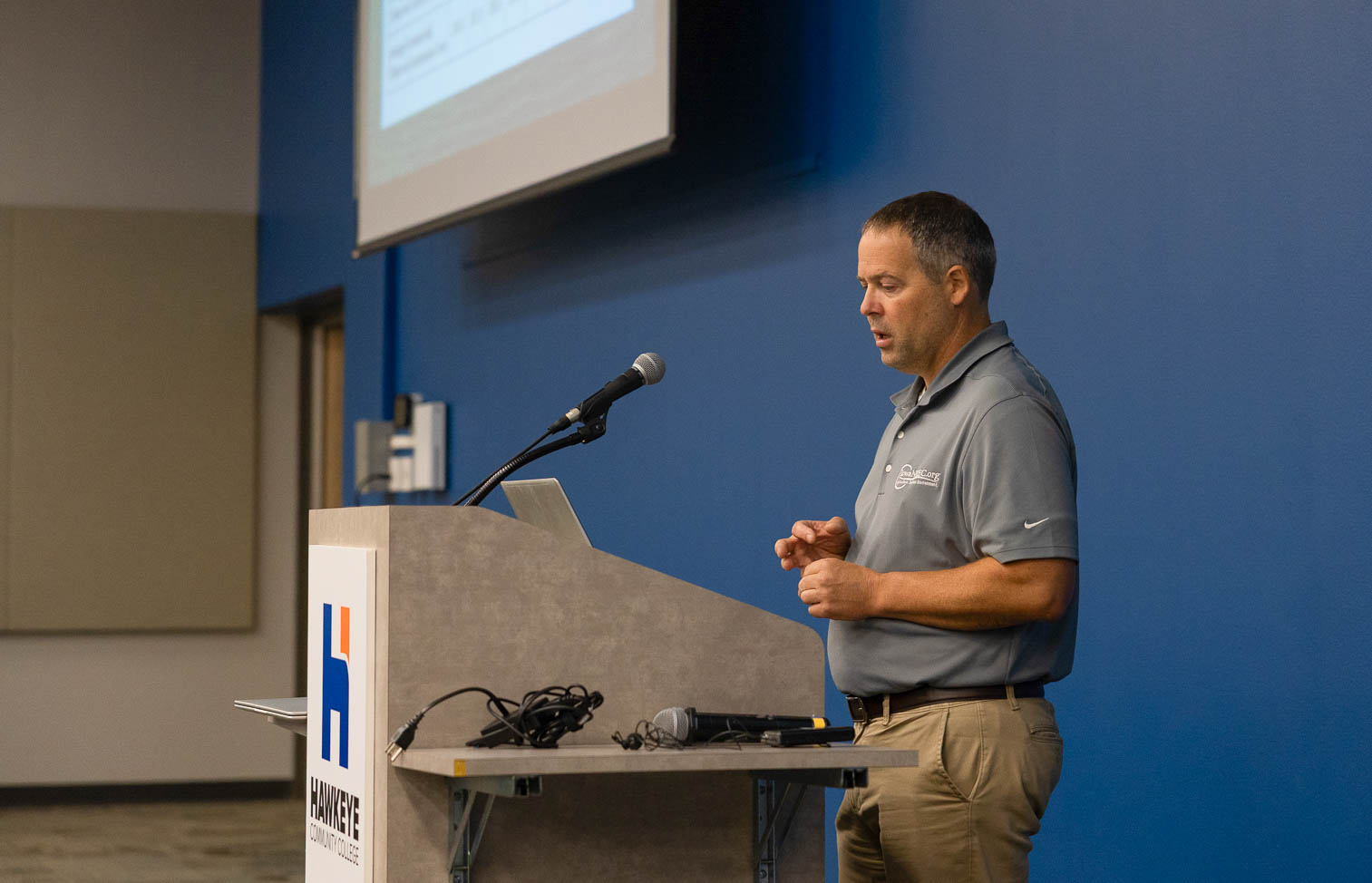
(Photo: Iowa Soybean Association / Joclyn Kuboushek)
INREC measures Iowa's nutrient strategy gains
July 24, 2025 | Kriss Nelson
Iowa has made progress in reducing nutrient loss, especially phosphorus. But long-term improvements in water quality depend on ongoing progress, partnerships and wider adoption of conservation techniques.
INREC
Progress made, work ahead for water quality
The Iowa Nutrient Research & Education Council (INREC), supports, monitors and reports on progress toward the Iowa Nutrient Reduction Strategy efforts through science-based solutions and collaboration across Iowa’s agricultural production system.
Ben Gleason, executive director of INREC shared the council’s work during the Iowa Soybean Association’s (ISA) 4R Summit held earlier this month in Cedar Falls.
Gleason says it’s important to view Iowa’s nutrient reduction progress through the right lens, especially when considering the long-term baseline set by the Gulf Hypoxia Task Force.
“We used 1980 to 1996 as our baseline years,” Gleason says. “That’s how the 45% reduction target was set, and it gives us a point of comparison to see how far we’ve come.”
Progress varies year to year, largely due to weather, but Gleason says there have been significant gains, particularly in phosphorus reduction.
“Phosphorus is typically tied to soil particles, so when we reduce erosion, we reduce phosphorus loss,” he says. “When you consider the switch to herbicide-resistant crops, increased adoption of no-till, improvements in soil testing, and the installation of terraces and waterways, we've come a long way since the 1980s.”
Nitrogen, however, is a tougher challenge.
“Nitrogen moves with water,” Gleason says. “So when we get a big flush in the spring, we can lose a lot of it. That makes management trickier.”
While practices like wetlands, bioreactors and saturated buffers are helping treat tile drainage, they’re relatively new and still scaling up. Gleason notes that nitrogen use efficiency has improved, thanks to better timing, use of inhibitors and higher-yielding crops grown with the same or less fertilizer.
To track progress beyond just water samples, which can be heavily influenced by short-term weather, Gleason says Iowa uses a “logic model” to measure change across four areas: inputs, people, land and water.
“We ultimately want to see cleaner water,” he says. “But to get there, we need change on the land. And to see land-use change, we need people: farmers, landowners, retailers with the right knowledge and resources.”
That’s where investments in funding, education and research come in. Gleason points to increased public-private partnerships, retailer involvement and farmer outreach as critical drivers. The Iowa Nutrient Research Center, created shortly after the launch of the state’s Nutrient Reduction Strategy (NRS), is also playing a key role in evaluating and improving practices.
Ag retailer survey
INREC’s ag retailer survey tracks changes on the land by working directly with ag retailers to assess in-field practices like nutrient management, tillage and cover crops. According to the most recent data, cover crop adoption jumped from 1.6 million acres in 2017 to 3.8 million in 2023. No-till practices also increased, with one-third of corn acres and nearly half of soybean acres now in no-till systems.
“These are big shifts when you think back to moldboard plows and intensive tillage in the '80s,” Gleason says. “Because of these changes, we estimate Iowa has achieved roughly a 30% reduction in phosphorus loads.”
Nitrogen reduction will take continued focus, he adds. But the foundation is there, and the progress is measurable. There has been great adoption of the use of nitrogen inhibitors and cover crops – both reduce nitrogen loss.
“We’re seeing real improvements across many of the indicators in the logic model,” says Gleason. “Now, it’s about keeping that momentum going.”
Written by Kriss Nelson.
Back